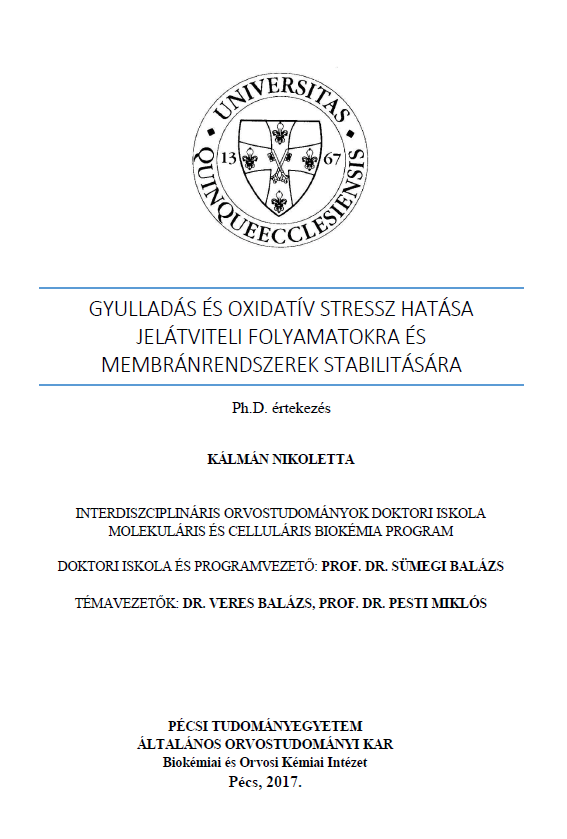Gyulladás és oxidatív stressz hatása jelátviteli folyamatokra és membránrendszerek stabilitására
Abstract
Toll-Like Receptor 4 (TLR4) plays an important role in initiating the innate immune response and its activation by the bacterial cell wall component endotoxin (lipopolysaccharide (LPS)) is responsible for chronic and acute inflammatory disorders. Uncontrolled inflammatory signaling may lead to more severe sepsis causing high mortality (septic shock).
LPS binding activates two pathways downstream of TLR4: myeloid differentiation primary response gene 88 (MyD88)-dependent and Toll/interleukin-1 receptor domain-containing adaptor inducing interferon-β (TRIF)-dependent pathways that culminate in the activation of NF-κB, IRFs, or MAP kinases to regulate the expression of cytokines, chemokines, and type I IFNs that ultimately protect the host from microbial infection.
MyD88 recruits interleukin-1 receptor associated kinase-1 and -4 and tumor necrosis factor receptor associated factor 6 (TRAF6), leading to activation of the IκB kinase (IKK) via transforming growth factor-β activated kinase-1 (TAK1). IKK phosphorylates IκBα which leads to the nuclear translocation and DNA binding of NF-κB.
In the other branch of the TLR4 signaling pathway, Toll/interleukin-1 receptor domain-containing adaptor inducing interferon-β (TRIF) and TRIF-related adaptor molecule are recruited to TLR4, and TRIF recruits receptor interacting protein-1 (RIP1) to the proximal receptor signaling complex. It is thought that TRAF6 and RIP1 Lys63-linked polyubiquitinations both facilitate TAK1 and so NF-κB activation.

